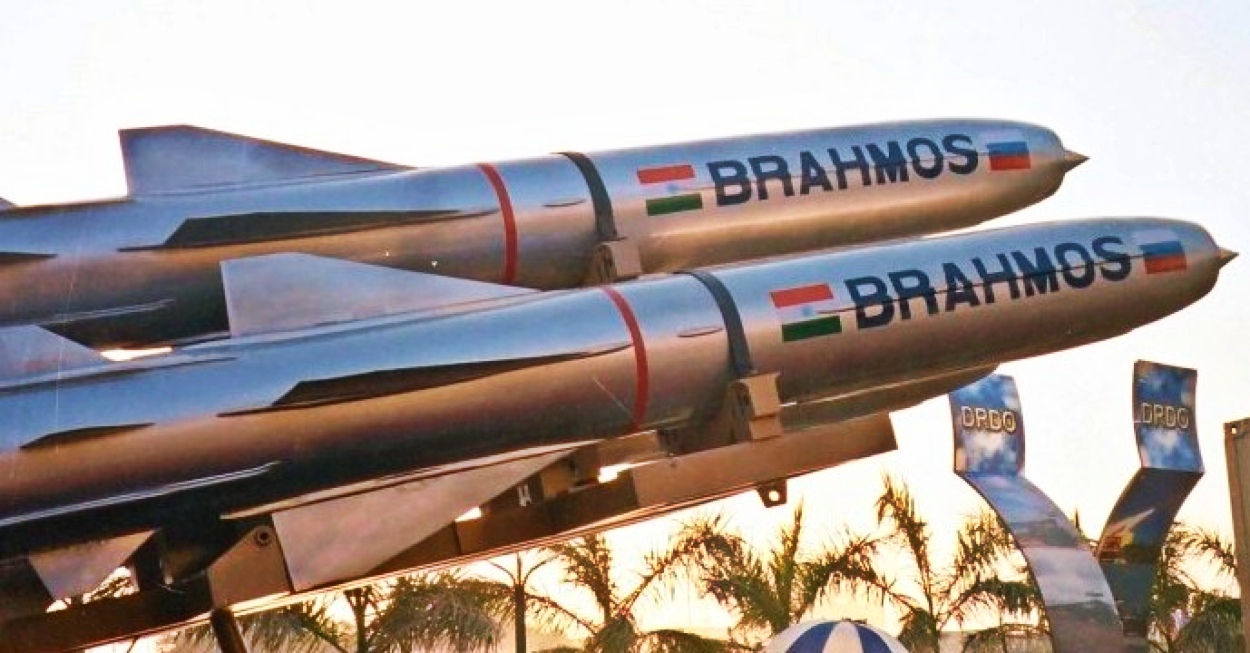Thailand has long enjoyed a cozy relationship with China. But the new dispensation is keen to forge stronger ties with other countries, and India is luring it with the fastest cruise missile – BrahMos, in service in the three arms of the Indian military.
After getting its state-of-the-art supersonic cruise missile in China’s backyard in the Philippines, BrahMos Aerospace has been negotiating with several potential customers. Talks with Thailand have been going on for some time now.
On November 6, Thailand Defense Minister Sutin Klungsang was given information about the missile system. Director (Market Promotion and Export) Praveen Pathak briefed a high-level delegation led by Defense Minister Klungsang about the latest developments of the BrahMos weapon Complex and BrahMos Pavilion on the inaugural day of Defense Security 2023 at IMPACT Exhibition Center, Bangkok.
“The minister appreciated the capabilities of the Weapon Complex and showed keen interest in the Brahmos Missile,” the handle of BrahMos on X said.
While Thailand expressed interest in the missiles some time back, discussions picked up pace after the visit of Royal Thai Navy Chief Admiral Ruddit to India in December 2018. The negotiations have been going on for some time.
Thailand is prized by China partly because this rapidly modernizing Southeast Asian nation enjoys access near Bangkok to the Gulf of Thailand, which opens onto the South China Sea.
Thailand’s new civilian coalition government may seek greater engagement with Western democracies even as it continues to maintain ties with China forged by the previous military-led regime.
While the new civilian government in Thailand might not lean away from China completely, it would like to diversify its ties with other countries as well. India will also have to work hard to clinch the deal with Thailand.
The Lure Of BrahMos For Southeast Asian Countries
BrahMos is a modification of Soviet-era anti-ship missiles (Oniks, Yakont) developed by the Reutov Design Bureau in the late 1980s. The name is derived from India’s Brahmaputra and Russia’s Moskva rivers. The first test launch was conducted on June 12, 2001, at the Chandipur range in Odisha, India, and subsequently, the missiles began production at enterprises in both countries.
Development of these cruise missiles is a natural progression for India in seeking to develop various platforms for its military arsenal, either on its own or with a partner – but in India.
BrahMos is technically a ramjet-powered supersonic cruise missile with a solid propellant booster that can be launched from land-based canisters, submarines, ships, and now aircraft. It travels at speeds of Mach 2.8 to 3.0 but is being upgraded to travel faster than Mach 5.0. for the hypersonic variant.
One of its special features is its ability to fly extremely close to the ground to avoid missile defense systems. In fact, during the terminal phase, the missile can fly as low as 10 meters to the ground. In the final phase, the missile relies on active radar seeker or inertial guidance.
“There is great interest from abroad in BrahMos – and there are regulations already in place. An in-principle agreement has been reached on the potential export to third nations back in 2016.
Potential users may include the Philippines, South Korea, Algeria, Greece, Malaysia, Thailand, Egypt, Singapore, Venezuela, the UAE, Chile, South Africa and Vietnam. Delegations from these nations have shown serious interest. But of course, every possible deal would have to be decently proven and processed along the guidelines in place in the JV,” Pathak said in an interview in 2019.
While the Thailand deal looked imminent, the Philippines became the first country to purchase the weapon system for US $ 375 million. The landmark deal is seen as the opening act in India’s gradual emergence as a major defense supplier to Southeast Asian nations – from the Philippines to Indonesia to Vietnam – which are locked in confrontation with a resurgent China.

In March 2023, BrahMos Aerospace CEO Atul D. Rane said that the company was in advanced discussions with Jakarta on a deal worth US $200 million to US $350 million under which it had offered to supply shore-based missiles and a version that can be mounted on warships.
BrahMos is also aiming to land a follow-on order of around US $300 million with the Philippines, where its missiles are scheduled to be delivered to the Philippine Marine Corps starting at the end of 2023, Rane said. The Philippines Army is expected to order a land-based version of the missile system.
“The Philippines themselves have sort of indicated to us that this is just an ice breaker,” Rane said, referring to the 2022 sale. “They are looking at more systems.”
Director of the Centre for Security, Strategy & Technology (CSST) at the Observer Research Foundation, Dr. Rajeswari (Raji) Pillai Rajagopalan, emphasizes the strategic aspect of India’s BrahMos push to the Southeast Asian countries. “Given that these countries are facing a threat from China and have active ongoing disputes with the Asian giant, helping them increases the burden that China faces in the South China Sea,” Raji writes in the Diplomat.
“Supplying missiles such as the BrahMos is one way to apply China’s strategy against itself. Over the last two decades, China has emphasized anti-access/area denial (A2AD) with the US, building capabilities that threaten the stronger US Navy in the South China Sea. Supplying anti-ship missiles such as the BrahMos helps ensure that smaller countries can also employ their own A2AD strategies against China,” she adds.
- Ritu Sharma has been a journalist for over a decade, writing on defense, foreign affairs, and nuclear technology. Article Republished
- She can be reached at ritu.sharma (at) mail.com
- Follow EurAsian Times on Google News




